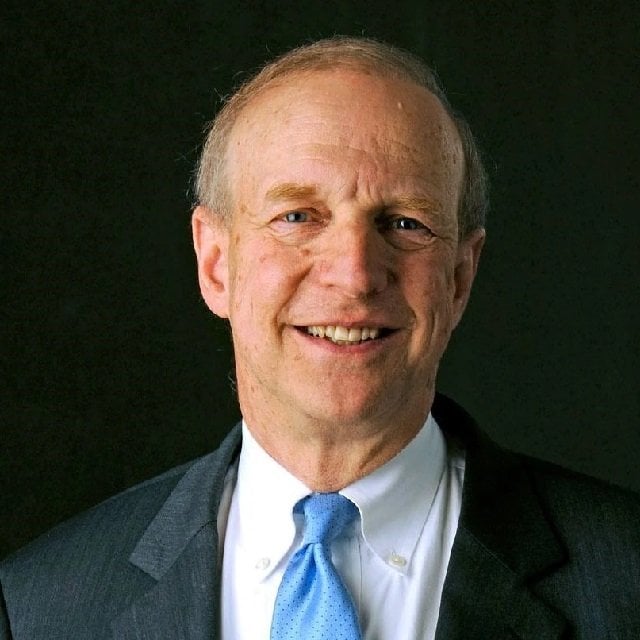Inside the Secure 2.0 Regulation Writing Process: Insights From a Treasury Veteran

J. Mark Iwry helped design the regulations that shape your clients’ retirement finances.
Today, he’s getting extra attention because of his decades of experience with programs affected by the new Setting Every Community Up for Retirement Enhancement Act, or Secure 2.0, which came to life in December.
Iwry now serves as a nonresident senior fellow at Brookings Institution and as a visiting scholar at Wharton’s Pension Research Council.
He started out by earning a bachelor’s degree, a law degree and a master’s degree in public policy from Harvard. From 1992 through 2001, and then from 2009 through 2017, he worked at the U.S. Treasury Department, which is the parent of the Internal Revenue Service. During the administration of former President Barack Obama, he was deputy assistant secretary for retirement and health policy with the Office of Tax Policy.
Iwry also has practiced law, first at Covington & Burling from 1977 through 1992, and then at Sullivan & Cromwell from 2004 through 2009.
He has held teaching positions and research positions at George Washington University, Georgetown University and AARP, as well as at Brookings and Wharton. He often appears as a guest on videos produced by the Tax Policy Center, a research organization backed by the Urban Institute and Brookings.
While at Treasury, Iwry was on teams that drafted many federal health insurance and retirement services regulations. He also helped put together frameworks for new types of benefits arrangements, such as programs that enroll workers in individual retirement accounts automatically, 401(k) plan automatic enrollment provisions, provisions for rolling employer plan assets over automatically into default IRAs, and the “qualified longevity annuity contract.”
The QLAC is a deferred income annuity that’s designed to provide affordable longevity protection for retirement savers with 401(k) plan, 403(b) plan or IRA assets by starting a lifetime stream of benefits payments only when a saver reaches a specified trigger age, such as 80 or 85.
Many Secure 2.0 provisions will affect provisions and programs that Iwry helped set up.
Secure 2.0 section 202, for example, will increase the amount an IRA holder or 401(k) plan participant can contribute to a QLAC to $200,000, from $125,000.
Iwry answered questions via email about the teams from Treasury, the U.S. Department of Labor’s Employee Benefits Security Administration and other federal agencies that will bring the QLAC changes and other Secure 2.0 provisions to life.
The interview has been condensed and edited.
THINKADVISOR: Roughly how many Treasury and IRS people might be involved with writing Secure 2.0 regulations, and roughly how many EBSA people? Thousands? Hundreds?
MARK IWRY: Nothing like thousands or hundreds. Numbers like those apply to the people in the field — doing investigations and audits, enforcement, administration, reviewing and approving applications, processing tax returns and refunds, etc.
As for how many people are writing the regulations for EBSA and IRS, you’d think perhaps the number of people might increase over the years, as the law is becoming more complex all the time and the development of high-quality regulations is labor-intensive. But actually, the number of people engaged in writing regulations always seems to be the same: namely, half as many people as they feel are needed.
I’d guess it’s probably close to a dozen, or maybe a few more working on EBSA regulations, and maybe a couple dozen working on regulations at IRS and Treasury.
How do the agencies interact?
Jurisdiction over retirement policy is split between the Labor Department and the Treasury/IRS, reflecting the jurisdictional divide between the congressional labor committees and tax-writing committees. Many of the rules are actually repeated verbatim in both the tax code and the labor laws (the Employee Retirement Income Security Act).
So one day in the mid-1970s, the two top officials in charge of retirement at the two agencies met for lunch and agreed on how to allocate and coordinate responsibilities — memorialized on a paper napkin.
Congress later codified the napkin treaty in legislation that allocates between the Treasury and Labor Departments the authority to interpret and administer each of the pertinent legislative provisions.
On the tax side, people often confusingly refer to the IRS and Treasury separately. But the IRS is part of Treasury. Can you sort that out for us?
Yes, the IRS is an agency that is part of the Treasury Department — in fact, its single largest component.
References to “Treasury” (as distinct from IRS) generally refer to another component of the Treasury Department: the Office of Tax Policy, which works hand-in-glove with the IRS in interpreting and implementing the tax code by co-authoring regulations and other guidance.
The Office of Tax Policy, in turn, includes an Office of the Benefits Tax Counsel — six or seven lawyers and a pension actuary — that is responsible for the tax aspects of pensions, retirement savings, health care and other employee benefits.
When it comes to developing regulations interpreting retirement legislation like Secure 2.0, this small but very expert Benefits Tax Counsel group at Treasury teams up with highly skilled IRS lawyers who specialize in employee plans and employee benefits.
What happens if the IRS and Treasury groups disagree?
They work it out.
It’s less than a 10-minute walk between the Treasury building (next door to the White House) and the IRS headquarters on Constitution Avenue. The Treasury people shuttle between the two buildings all the time.
Ultimately, the IRS decides how the tax laws, including those relating to retirement, are administered and how they apply to particular firms or individual taxpayers.
But tax regulations are a joint Treasury-IRS work product, with Treasury having the final say on policy in the tax area, including what policy positions regulations will take when interpreting and implementing retirement tax legislation.






